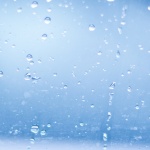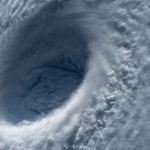Hurricane Irma is considered one of the most powerful hurricanes ever recorded in the Atlantic and was listed at one point as a Category 5 hurricane, the strongest kind. It is ranked as a standout amongst the most destructive storms in this side of the globe as it hit a wide swath of Florida. It first made a landfall on the Florida Keys and after that went on shore south of Naples and shot up the west, wreaking havoc and causing wanton destruction on lives and property on the people of Florida.
Tall trees were uprooted, streets were flooded heavily and roofs were ripped off. If that weren’t enough, around 60-80 percent of the state was without power for weeks causing even more problems, especially in terms of communication, which is a very important matter in times of crises like these.
Among the many stories of fear is from Julie Harry where she told in an interview from CNBC News that she and her children were trapped inside their home while the storm was raging.
“My heart just pounded out of my chest the whole time,” said Hally. “You hear stuff hitting your roof. It honestly sounds like somebody is just whistling at your window the whole night. It’s really scary.”
The strong winds broke tree branches and tore a part of her fence down but luckily, her house was undamaged.
But the same cannot be said for many of the homes in Naples, Florida. Some drone footage from CBS News reveals the aftermath of the hurricane wherein a residential community with houses destroyed and many of the roofs shattered into bits. There was one house in particular in which a part of its structure collapsed entirely including the walls and the roof. Upon seeing that part, one can only wonder if lives were lost in that particular house and became a part of the 69 deaths and counting the hurricane has inflicted on the people of Florida.
Turning over to the Everglades, things look a little bit different. Amid storms like Hurricane Irma, huge amounts of freshwater fall on the wetlands as substantial rain and attempt to stream out to the drift, significantly quicker than usual, as a result of the geography and the canals. This water slams into the storm surge, acquiring seawater, which prompts flooding as well as changes the elements of the saltwater-freshwater balance.
Since grasses and trees react differently to storms than humans, they flourish better in either freshwater or saltwater which can mean a lot to the Everglades ecosystem which has been shrinking since people slowly occupied the lands either through agriculture use and urban development ever since the 1800’s.
We, the people, can take a cue from Mother Nature in the regard. Everywhere you look there are stories of support and cooperation amid this terrible tragedy. There was a family who, though victims themselves, raised thousands of dollars that was used in the relief operation for the other victims of the storm. There was also a man who offered his home as shelter to people and even animals who would otherwise fall prey to the deadly storm. Stories like these from unsung heroes tell us that dark clouds may spread but never should we let these rule over us. There may a shortage of food, water, plywood and gas for the moment, but there is one thing we sure have a huge supply of – hope.










